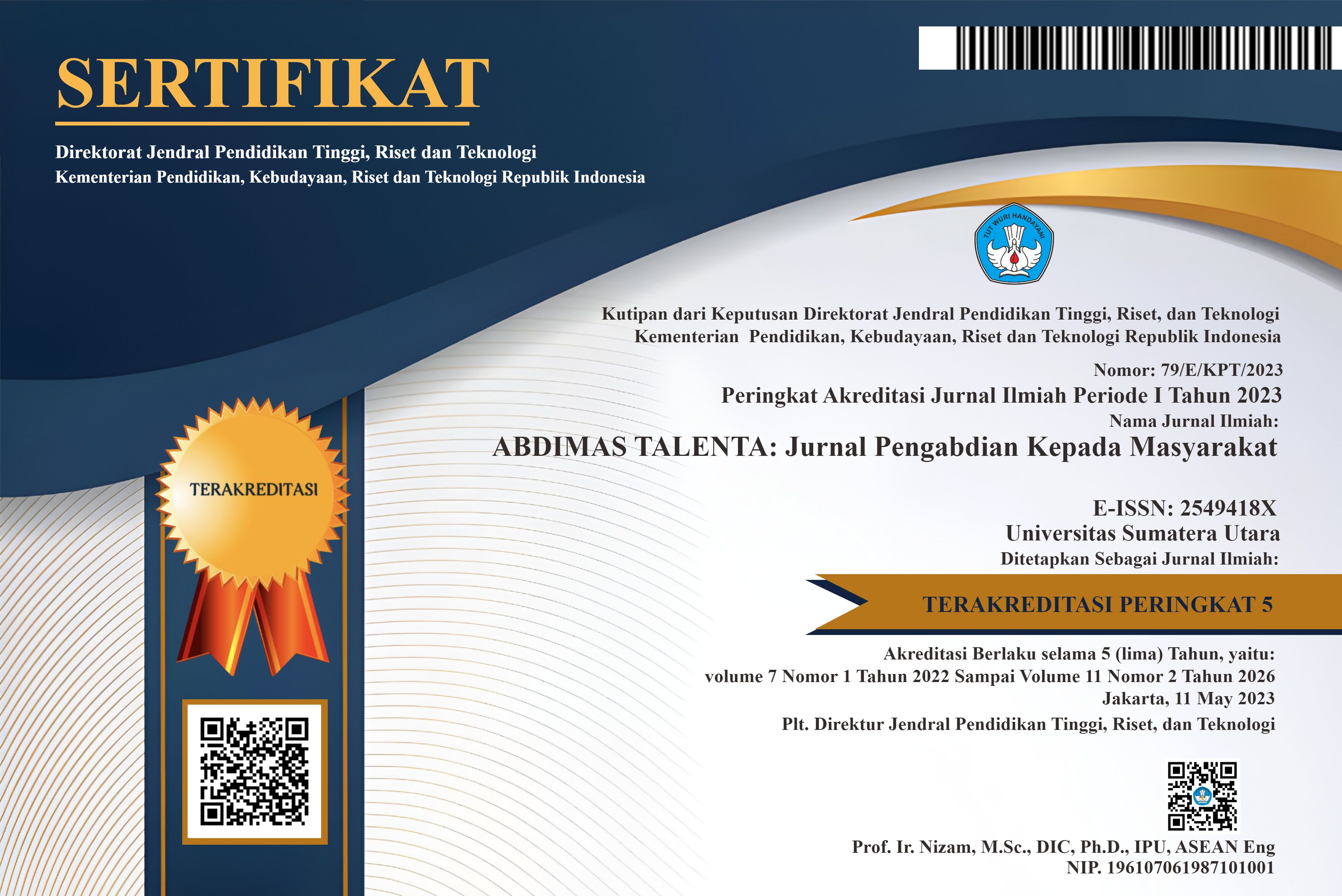Rabies Education for Junior High School Students to Prevent Rabies in the Community at Nurcahaya Padang Bulan Medan Private School
DOI:
https://doi.org/10.32734/abdimastalenta.v10i1.18057Keywords:
Nurcahaya Junior High School, RabiesAbstract
Rabies is a zoonotic acute infectious disease that can be transmitted from animals to humans through the bite of a rabies-positive dog. Rabies is caused by a Lyssavirus virus, which belongs to the family Rhabdoviridae, and is transmitted through the bite of a rabies-positive animal such as a dog. The disease is often found in dogs, cats, and monkeys. In humans, rabies is transmitted through dog bites, and deaths from rabies occur every year with a case fatality rate of 100 per cent. According to WHO, rabies cases annually reach 60,000 people worldwide, with 95 per cent of cases occurring in Africa and Asia. The incidence rate of rabies is 40 per cent, with most cases occurring in children. Education methods were quasi-experimental to increase children’s knowledge of rabies prevention and control in community service, especially junior high school students and the community. There were 40 respondents involved in this education program, beginning with a pretest. The intervention was conducted in several sessions for in-depth interaction and better understanding. The intervention increased the knowledge of students in the post-test. Data analysis was performed using descriptive statistical methods. Observation and documentation were used to strengthen the pre-and post-test findings and observe the level of participation of junior high school children, measured by attendance and engagement. The results showed that the education program could empower junior high school students, increase their knowledge, and encourage active contributions in preventing rabies.
Downloads
Downloads
Published
Issue
Section
License
Copyright (c) 2025 ABDIMAS TALENTA: Jurnal Pengabdian Kepada Masyarakat

This work is licensed under a Creative Commons Attribution-ShareAlike 4.0 International License.
The Authors submitting a manuscript do so on the understanding that if accepted for publication, copyright of the article shall be assigned to Jurnal Abdimas TALENTA as well as TALENTA Publisher Universitas Sumatera Utara as the publisher of the journal.
Copyright encompasses exclusive rights to reproduce and deliver the article in all forms and media. The reproduction of any part of this journal, its storage in databases and its transmission by any form or media, will be allowed only with written permission from Jurnal Abdimas TALENTA.
The Copyright Transfer Form can be downloaded here.
The copyright form should be signed originally and sent to the Editorial Office in the form of original mail or scanned document.












